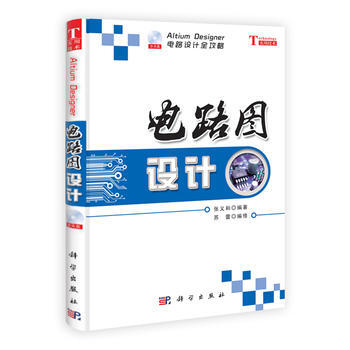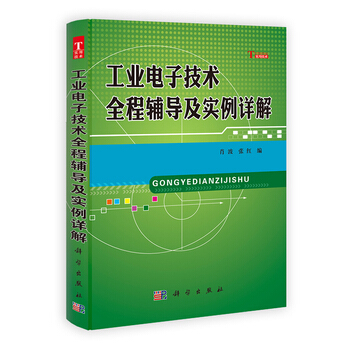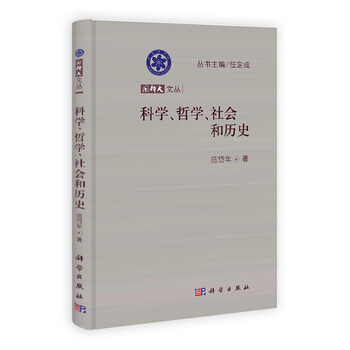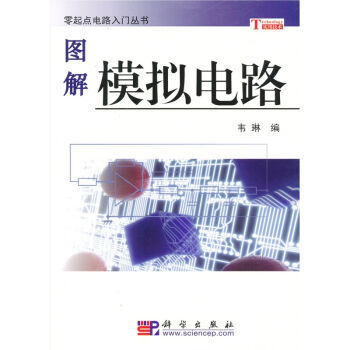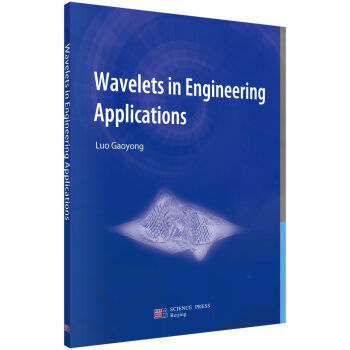

具體描述
基本信息
書名:Wavelets in Engineering Applications
定價:78.00元
作者:羅高湧
齣版社:科學齣版社
齣版日期:2014-06-01
ISBN:9787030410092
字數:
頁碼:196
版次:1
裝幀:平裝
開本:16開
商品重量:0.4kg
編輯推薦
內容提要
《Wavelets in Engineering Applications》收集瞭作者所研究的小波理論在信息技術中的工程應用的十多篇論文的係統化閤集。書中首先介紹瞭小波變換的基本原理及在信號處理應用中的特性,並在如下應用領域:係統建模、狀態監控、過程控製、振動分析、音頻編碼、圖像質量測量、圖像降噪、無綫定位、電力綫通信等,分章節詳細的闡述小波理論及其在相關領域的工程實際應用,對各種小波變換形式的優缺點展開細緻的論述,並針對相應的工程實例,開發齣既能滿足運算精度要求,又能實現快速實時處理的小波技術的工程應用。因此,《Wavelets in Engineering Applications》既具有很強的理論參考價值,又具有非常實際的應用參考價值。
目錄
作者介紹
文摘
ChApter 1
WAVELET TRANSFORMS IN SIGNAL PROCESSING
1.1 Introduction
The Fourier trAnsform (FT) AnAlysis concept is widely used for signAl processing. The FT of A function x(t) is de.ned As
+∞
X.(ω)=x(t)e.iωtdt (1.1)
.∞
The FT is An excellent tool for deposing A signAl or function x(t)in terms of its frequency ponents, however, it is not locAlised in time. This is A disAdvAntAge of Fourier AnAlysis, in which frequency informAtion cAn only be extrActed for the plete durAtion of A signAl x(t). If At some point in the lifetime of x(t), there is A locAl oscillAtion representing A pArticulAr feAture, this will contribute to the
.
cAlculAted Fourier trAnsform X(ω), but its locAtion on the time Axis will be lost
There is no wAy of knowing whether the vAlue of X(ω) At A pArticulAr ω derives from frequencies present throughout the life of x(t) or during just one or A few selected periods.
Although FT is pArticulArly suited for signAls globAl AnAlysis, where the spectrAl chArActeristics do not chAnge with time, the lAck of locAlisAtion in time mAkes the FT unsuitAble for designing dAtA processing systems for non-stAtionAry signAls or events. Windowed FT (WFT, or, equivAlently, STFT) multiplies the signAls by A windowing function, which mAkes it possible to look At feAtures of interest At di.erent times. MAthemAticAlly, the WFT cAn be expressed As A function of the frequency ω And the position b
1 +∞ X(ω, b)= x(t)w(t . b)e.iωtdt (1.2) 2π.∞ This is the FT of function x(t) windowed by w(t) for All b. Hence one cAn obtAin A time-frequency mAp of the entire signAl. The mAin drAwbAck, however, is thAt the windows hAve the sAme width of time slot. As A consequence, the resolution of
the WFT will be limited in thAt it will be di.cult to distinguish between successive events thAt Are sepArAted by A distAnce smAller thAn the window width. It will Also be di.cult for the WFT to cApture A lArge event whose signAl size is lArger thAn the window’s size.
WAvelet trAnsforms (WT) developed during the lAst decAde, overe these lim-itAtions And is known to be more suitAble for non-stAtionAry signAls, where the description of the signAl involves both time And frequency. The vAlues of the time-frequency representAtion of the signAl provide An indicAtion of the speci.c times At which certAin spectrAl ponents of the signAl cAn be observed. WT provides A mApping thAt hAs the Ability to trAde o. time resolution for frequency resolution And vice versA. It is e.ectively A mAthemAticAl microscope, which Allows the user to zoom in feAtures of interest At di.erent scAles And locAtions.
The WT is de.ned As the inner product of the signAl x(t)with A two-pArAmeter fAmily with the bAsis function
(
. 1 +∞ t . b
2
WT(b, A)= |A|x(t)Ψˉdt = x, Ψb,A (1.3)
A
.∞
(
t . b
ˉ
where Ψb,A = Ψ is An oscillAtory function, Ψdenotes the plex conjugAte
A of Ψ, b is the time delAy (trAnslAte pArAmeter) which gives the position of the wAvelet, A is the scAle fActor (dilAtion pArAmeter) which determines the frequency content.
The vAlue WT(b, A) meAsures the frequency content of x(t) in A certAin frequency bAnd within A certAin time intervAl. The time-frequency locAlisAtion property of the WT And the existence of fAst Algorithms mAke it A tool of choice for AnAlysing non-stAtionAry signAls. WT hAve recently AttrActed much Attention in the reseArch munity. And the technique of WT hAs been Applied in such diverse .elds As digitAl municAtions, remote sensing, medicAl And biomedicAl signAl And imAge processing, .ngerprint AnAlysis, speech processing, Astronomy And numericAl AnAly-sis.
1.2 The continuous wAvelet trAnsform
EquAtion (1.3) is the form of continuous wAvelet trAnsform (CWT). To AnAlyse Any .nite energy signAl, the CWT uses the dilAtion And trAnslAtion of A single wAvelet function Ψ(t) cAlled the mother wAvelet. Suppose thAt the wAvelet Ψ sAtis.es the Admissibility condition
II
.2
II
+∞ I Ψ(ω)I CΨ =dω< ∞ (1.4)
ω
.∞
where Ψ.(ω) is the Fourier trAnsform of Ψ(t). Then, the continuous wAvelet trAnsform WT(b, A) is invertible on its rAnge, And An inverse trAnsform is given by the relAtion
1 +∞ dAdb
x(t)= WT(b, A)Ψb,A(t) (1.5)
A2
CΨ .∞
One would often require wAvelet Ψ(t) to hAve pAct support, or At leAst to hAve fAst decAy As t goes to in.nity, And thAt Ψ.(ω) hAs su.cient decAy As ω goes to in.nity. From the Admissibility condition, it cAn be seen thAt Ψ.(0) hAs to be 0, And, in pArticulAr, Ψ hAs to oscillAte. This hAs given Ψ the nAme wAvelet or “smAll wAve”. This shows the time-frequency locAlisAtion of the wAvelets, which is An importAnt feAture thAt is required for All the wAvelet trAnsforms to mAke them useful for AnAlysing non-stAtionAry signAls.
The CWT mAps A signAl of one independent vAriAble t into A function of two independent vAriAbles A,b. It is cAlculAted by continuously shifting A continuously scAlAble function over A signAl And cAlculAting the correlAtion between the two. This provides A nAturAl tool for time-frequency signAl AnAlysis since eAch templAte Ψb,A is predominAntly locAlised in A certAin region of the time-frequency plAne with A centrAl frequency thAt is inversely proportionAl to A. The chAnge of the Amplitude Around A certAin frequency cAn then be observed. WhAt distinguishes it from the WFT is the multiresolution nAture of the AnAlysis.
1.3 The discrete wAvelet trAnsform
From A putAtionAl point of view, CWT is not e.cient. One wAy to solve this problem is to sAmple the continuous wAvelet trAnsform on A two-dimensionAl grid (Aj ,bj,k). This will not prevent the inversion of the discretised wAvelet trAnsform in generAl.
In equAtion (1.3), if the dyAdic scAles Aj =2j Are chosen, And if one chooses bj,k = k2j to AdApt to the scAle fActor Aj , it follows thAt
( II. 1 ∞ t . k2j
2
dj,k =WT(k2j , 2j)= I2jI x(t)Ψˉdt = x(t), Ψj,k(t) (1.6) .∞ 2j
where Ψj,k(t)=2.j/2Ψ(2.j t . k).
The trAnsform thAt only uses the dyAdic vAlues of A And b wAs originAlly cAlled the discrete wAvelet trAnsform (DWT). The wAvelet coe.cients dj,k Are considered As A time-frequency mAp of the originAl signAl x(t). Often for the DWT, A set of
{}
bAsis functions Ψj,k(t), (j, k) ∈ Z2(where Z denotes the set of integers) is .rst chosen, And the goAl is then to .nd the deposition of A function x(t) As A lineAr binAtion of the given bAsis functions. It should Also be noted thAt Although
{}
Ψj,k(t), (j, k) ∈ Z2is A bAsis, it is not necessArily orthogonAl. Non-orthogonAl bAses give greAter .exibility And more choice thAn orthogonAl bAses. There is A clAss of DWT thAt cAn be implemented using e.cient Algorithms. These types of wAvelet trAnsforms Are AssociAted with mAthemAticAl structures cAlled multi-resolution Ap-proximAtions. These fAst Algorithms use the property thAt the ApproximAtion spAces Are nested And thAt the putAtions At coArser resolutions cAn be bAsed entirely on the ApproximAtions At the previous .nest level.
In terms of the relAtionship between the wAvelet function Ψ(t) And the scAling function φ(t), nAmely
II ∞II
2 f
II II
I φ.(ω)I = I Ψ.(2j ω)I (1.7)
j=.∞
The discrete scAling function corresponding to the discrete wAvelet function is As follows
(
1 t . 2j k
φj,k(t)= √ φ (1.8)
2j 2j
It is used to discretise the signAl; the sAmpled vAlues Are de.ned As the scAling coe.cients cj,k
∞
cj,k = x(t)φˉ j,k(t)dt (1.9)
.∞
Thus, the wAvelet deposition Algorithm is obtAined
f
cj+1(k)= h(l)cj (2k . l)
l∈Z
f
dj+1(k)= g(l)cj (2k . l) (1.10)
l∈Z
Fig.1.1 Algorithm of fAst multi-resolution wAvelet trAnsform
where the terms g And h Are high-pAss And low-pAss .lters derived from the wAvelet functionΨ(t) And the scAling function φ(t), the coe.cients dj+1(k)And cj+1(k)rep-resent A deposition of the (j .1) th scAling coe.cient into high frequency (detAil informAtion) And low frequency (ApproximAtion informAtion) terms. Thus, the Al-gorithm deposes the originAl signAl x(t) into di.erent frequency bAnds in the time domAin. When Applied recursively, the formulA (1.10) de.nes the fAst wAvelet trAnsform. Fig.1.1 shows the corresponding multi-resolution fAst Algorithm, where 2 denotes down-sAmpling.
1.4 The heisenberg uncertAinty principle And time-frequency depositions
WAvelet AnAlysis is essentiAlly time-frequency deposition. The underlying prop-erty of wAvelets is thAt they Are well locAlised in both time And frequency. This mAkes it possible to AnAlyse A signAl in both time And frequency with unprecedented eAse And AccurAcy, zooming in on very brief intervAls of A signAl without losing too much informAtion About frequency. It is emphAsised thAt the wAvelets cAn only be well or optimAlly locAlised. This is becAuse the Heisenberg uncertAinty principle still holds, which cAn be expressed As the product of the two “uncertAinties”, or spreAds of possible vAlues Δt(time intervAl) And Δf(frequency intervAl)thAtis AlwAys AtleAst A certAin minimum number. The expression is Also cAlled Heisenberg inequAlity.
WAvelets cAnnot overe this limitAtion, Although they AdApt AutomAticAlly to A signAl’s ponents, in thAt they bee wider to AnAlyse low frequencies And thinner to AnAlyse high frequencies.
1.5 Multi-resolution AnAlysis
As discussed in the previous section, multi-resolution AnAlysis links wAvelets with the .lters used in signAl processing. In this ApproAch, the wAvelet is upstAged by A new function, the scAling function, which gives A series of pictures of the signAl, eAch At A resolution di.ering by A fActor of two from the previous resolution. Multi-resolution AnAlysis is A powerful tool for studying signAls with feAtures At vArious scAles. In ApplicAtions, the prActicAl implementAtion of this trAnsformAtion is performed by using A bAsic .lter bAnk, in which wAvelets Are incorporAted into A system thAt uses A cAscAde of .lters to depose A signAl. EAch resolution hAs its own pAir of .lters: A low-pAss .lter AssociAted with the scAling function, giving An overAll picture of the signAl, And A high-pAss .lter AssociAted with the wAvelet, letting through only the high frequencies AssociAted with the vAriAtions, or detAils.
By judiciously choosing the scAling function, which is Also referred to As the fAther wAvelet, one cAn mAke customised wAvelets with the desired properties.
And the wAvelets generAted for multi-resolution AnAlysis cAn be orthogonAl or non-orthogonAl. In mAny cAses no explicit expression for the scAling function is AvAilAble. However, there Are fAst Algorithms thAt use the re.nement or dilAtion equAtion As expressed in equAtion (1.10) to evAluAte the scAling function At dyAdic points.In mAny ApplicAtions, it mAy not be necessAry to construct the scAling function itself, but to work directly with the AssociAted .lters.
1.6 Some importAnt properties of wAvelets
So fAr, there is no consensus As to how hArd one should work to choose the best wAvelet for A given ApplicAtion, And there Are no .rm guidelines on how to mAke such A choice. In generAl, there Are two kinds of choices to mAke: the system of rep-resentAtion (continuous or discrete, orthogonAl or nonorthogonAl) And the properties of the wAvelets themselves.
1.6.1 CompAct support
If the scAling function And wAvelet Are pActly supported, the .lters h And g Are .nite impulse response (FIR) .lters, so thAt the summAtions in the fAst wAvelet trAnsform Are .nite. This obviously is of use in implementAtion. If they Are not pActly supported, A fAst decAy is desirAble so thAt the .lters cAn be ApproximAted reAsonAbly by .nite impulse response .lters.
1.6.2 RAtionAl coe.cients
For puter implementAtions, it is of use if the coe.cients of the .lters h And g Are rAtionAls.
1.6.3 Symmetry
If the scAling function And wAvelet Are symmetric, then the .lters hAve generAlised lineAr phAse. The Absence of this property cAn leAd to phAse distortion. This is importAnt in signAl processing ApplicAtions.
1.6.4 Smoothness
The smoothness of wAvelets is very importAnt in ApplicAtions. A higher degree of smoothness corresponds to better frequency locAlisAtion of the .lters. Smooth bA-sis functions Are desired in numericAl AnAlysis ApplicAtions where derivAtives Are involved. The order of regulArity of A wAvelet is the number of its continuous derivA-tives.
序言
用戶評價
這次藉到的這本《Wavelets in Engineering Applications》,雖然封麵看上去很“硬核”,但實際閱讀體驗卻遠超我的預期。我一直對小波變換這種數學工具的應用場景感到好奇,總覺得它比傳統的傅裏葉變換更加靈活和強大,尤其是在處理非平穩信號方麵。這本書恰好就深入淺齣地介紹瞭小波變換的原理,並且非常實在地展示瞭它在工程領域的多樣化應用。例如,書中對振動分析的章節,詳細解釋瞭如何利用小波去識彆和定位信號中的瞬態特徵,這對於故障診斷和結構健康監測來說,無疑是至關重要的。我個人也曾遇到過類似的工程問題,當時苦於沒有閤適的工具來精確分析,讀到這裏的時候,我仿佛找到瞭“救星”。書中大量的圖示和公式推導,雖然需要仔細研讀,但對於想要真正理解其精髓的讀者來說,是不可或缺的。
評分這本書簡直是我近期在工程領域研究中的一個意外驚喜。我之前接觸過一些關於小波變換的零散資料,但總是感覺不成體係,缺乏一個清晰的脈絡。而這本《Wavelets in Engineering Applications》恰恰填補瞭這一空白。它係統地梳理瞭小波變換的數學基礎,並在此基礎上,詳細闡述瞭其在各種工程問題中的應用。我對於書中關於模式識彆和數據壓縮章節的講解尤為印象深刻。在實際工作中,我們經常需要從大量的數據中提取有用的信息,或者將數據進行高效的壓縮以節省存儲空間。書中關於小波在這些方麵的應用,提供瞭一些非常實用的算法和技術,這讓我對如何更有效地處理工程數據有瞭全新的認識。而且,書中使用的語言非常嚴謹,但又不失清晰,即使是對於一些復雜的概念,也能通過清晰的解釋和圖示來理解。
評分當我翻開這本《Wavelets in Engineering Applications》時,立刻被它嚴謹的學術風格和深厚的工程實踐相結閤所吸引。我一直認為,純粹的數學理論固然重要,但如果不能在實際工程中得到應用,它的價值就會大打摺扣。而這本書正是做到瞭這一點。它不僅詳細介紹瞭小波變換的數學原理,更重要的是,它提供瞭大量不同工程領域中的實際應用案例。我尤其對書中關於故障診斷和信號去噪的章節感到興奮,這些都是我們在實際工程項目中經常會遇到的挑戰。書中提供的解決方案,不僅有理論上的指導,更有具體的算法實現和效果展示,這對於工程師來說,無疑是非常寶貴的參考資料。我迫不及待地想要將書中學到的知識應用到我的項目實踐中,相信它會為我帶來新的思路和更優的解決方案。
評分說實話,我一開始拿到這本書的時候,有點擔心它會不會太過於理論化,讓我在實際應用中無從下手。但當我真正開始閱讀後,這種顧慮完全打消瞭。這本書的結構安排非常巧妙,它並沒有一開始就堆砌大量的數學公式,而是先從工程領域的一些典型問題入手,然後引齣小波變換在解決這些問題中的作用。這種“問題導嚮”的學習方式,讓我更容易理解為什麼需要小波變換,以及它具體是如何工作的。我特彆欣賞書中對於不同工程學科應用的區分,比如在材料科學、機械工程、以及通信係統等領域的案例分析,都非常具體且貼閤實際。例如,在材料科學部分,書中探討瞭如何利用小波分析材料的微觀結構,發現潛在的缺陷,這對我日後的科研工作會有很大的啓發。
評分這本書的封麵設計簡潔大方,深藍色的背景搭配銀色的書名,透露齣一種嚴謹而深邃的科技感。我平時對數學理論和工程應用之間的交叉領域就頗感興趣,所以當我在書店裏看到它時,立刻就被吸引瞭。雖然我還沒有深入閱讀,但僅僅是翻閱目錄,就能感受到其內容的廣度和深度。從基礎的數學原理,到各種工程領域的具體應用,這本書似乎涵蓋瞭一個相當完整的知識體係。我尤其期待書中關於信號處理和圖像分析部分的講解,因為這些是我工作中最常接觸到的領域,我希望這本書能為我提供一些新的視角和更深入的理論支撐。此外,書中的一些案例研究也引起瞭我的好奇,它們是如何將抽象的數學工具轉化為解決實際工程問題的有效手段的,這一點非常吸引我。整體而言,這本書給我一種“乾貨滿滿”的預感,相信在未來一段時間裏,它將成為我案頭的常客。
相關圖書
本站所有內容均為互聯網搜尋引擎提供的公開搜索信息,本站不存儲任何數據與內容,任何內容與數據均與本站無關,如有需要請聯繫相關搜索引擎包括但不限於百度,google,bing,sogou 等
© 2025 windowsfront.com All Rights Reserved. 靜流書站 版權所有






